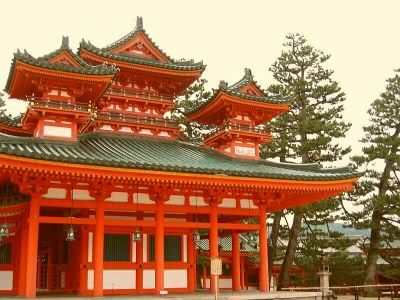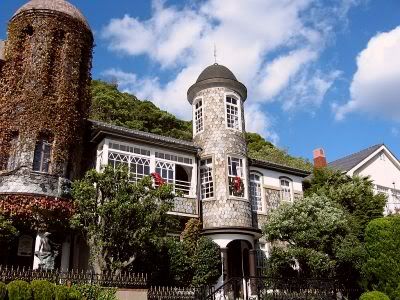
The establishment of Heian Jingu was a symbol of great respect the citizen of that time had for the Emperor. Another purpose was to unite the entire city under the Heian Kosha organization.

As one of the projects of the Heian Kosha, it was decided to annually celebrate October 22nd (the date when the capital was moved to Kyoto) with a grand festival - the Jidai Matsuri (時代祭)

The highlight of this festival is a procession of colorful and varied costumes and articles of the nobility as well as commoners, representing various ages during the passage of more than ten centuries. Thus the name 'Festival of the Ages'.

This procession consists of about 3,000 persons and stretches several kilometers in length. The costumes and equipment used are historically accurate.

The Royal Army of the Meiji Restoration (1868) is headed by a drum and the fife (flute) military band.

The Seven Court Nobles (shown is Sanjo Sanetomi, 1837 - 1891 with some good fashion sense) banded together in an effort to persuade the Emperor not to open the country to foreign relations.

Not sure who he is - noble man or commoner ?

For important imperial functions, the Tokugawa Shogun (1837 - 1853, Tokugawa Ieyoshi, 12th shogun of the Tokugawa shogunate of Japan) sent his deputies to Kyoto to pay his respect to the Emperor and the Imperial Family. As shown, carrying huge traveling boxes is a typical scene of those days.

The procession from the Kenrei-mon Gate of the Kyoto Imperial Palace to the Heian Shrine lasts for nearly five hours. It also includes the charming women dressed in the beautiful kimono of the imperial court (to be continued in next posting).









































